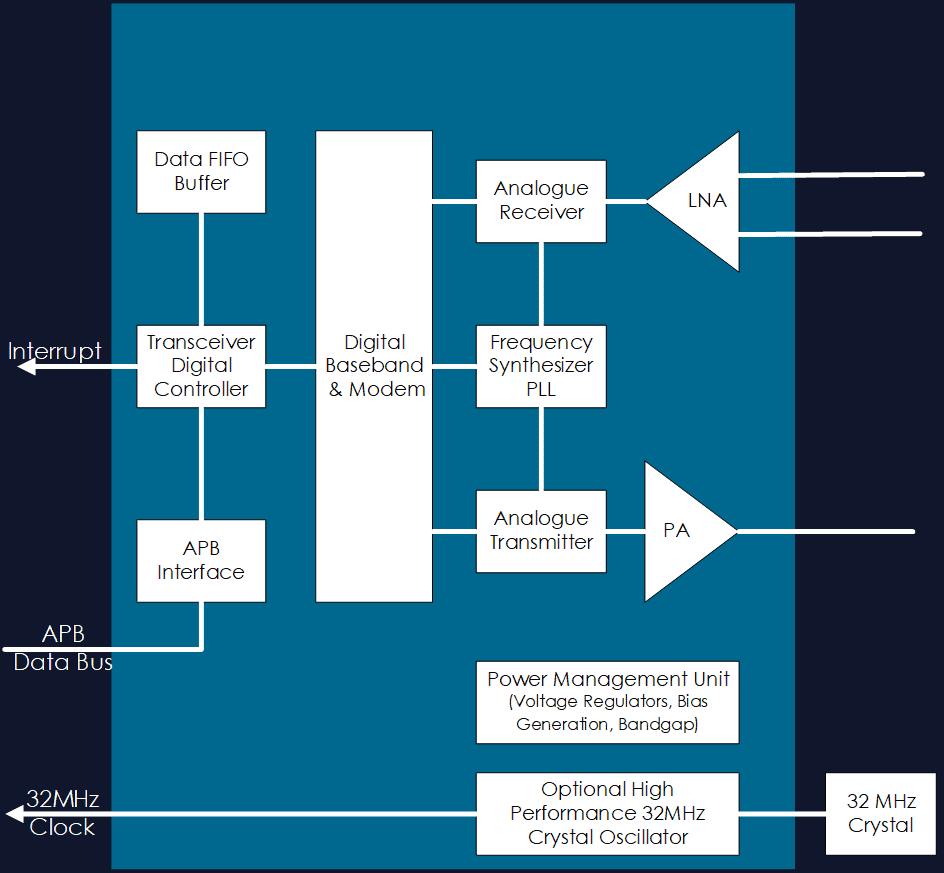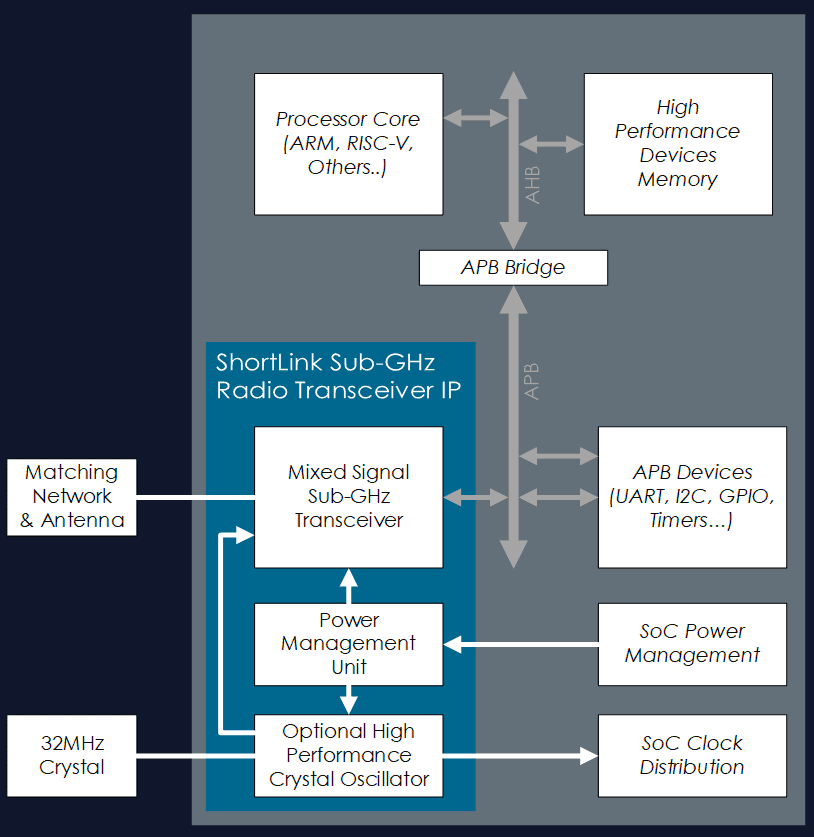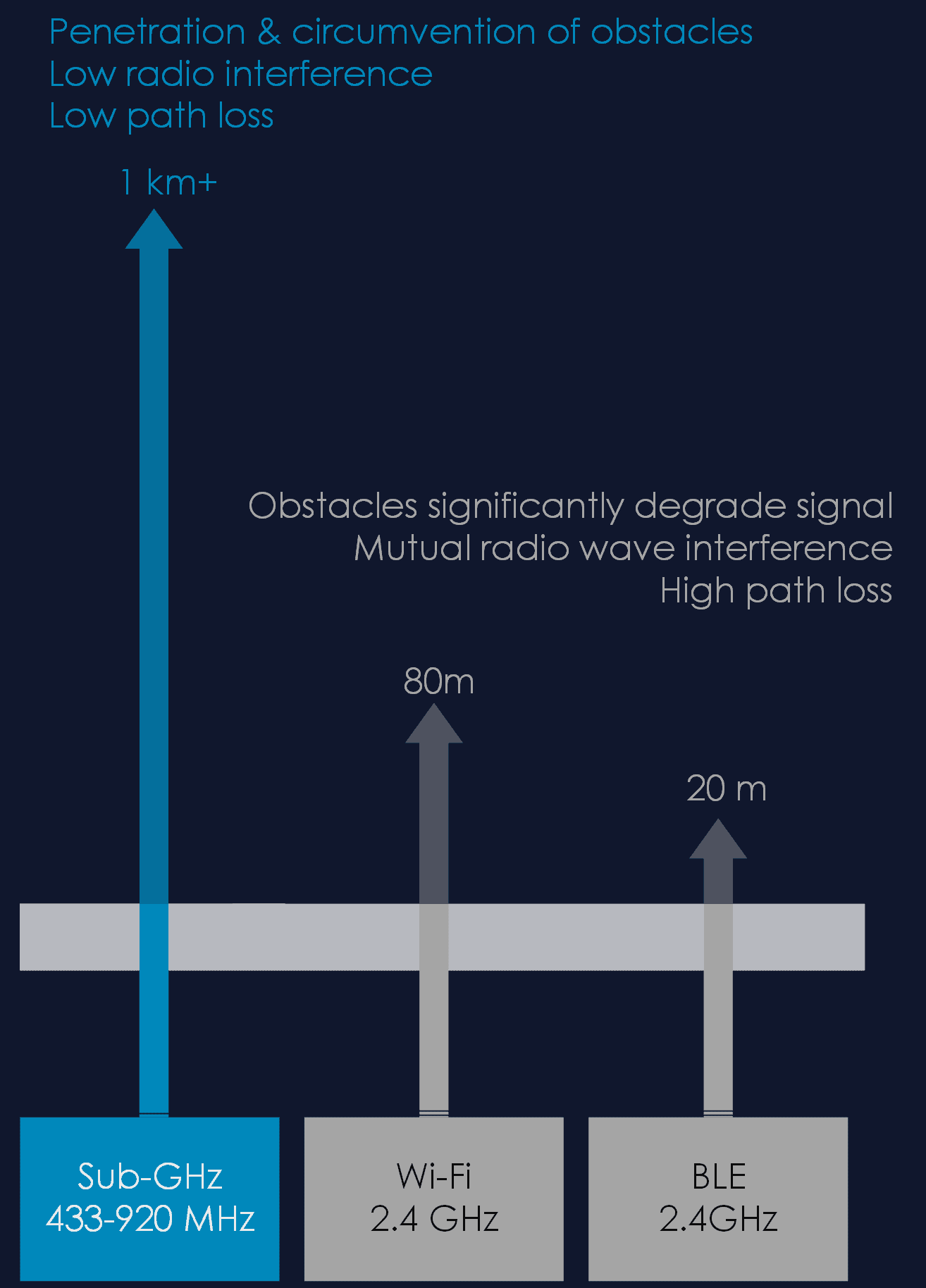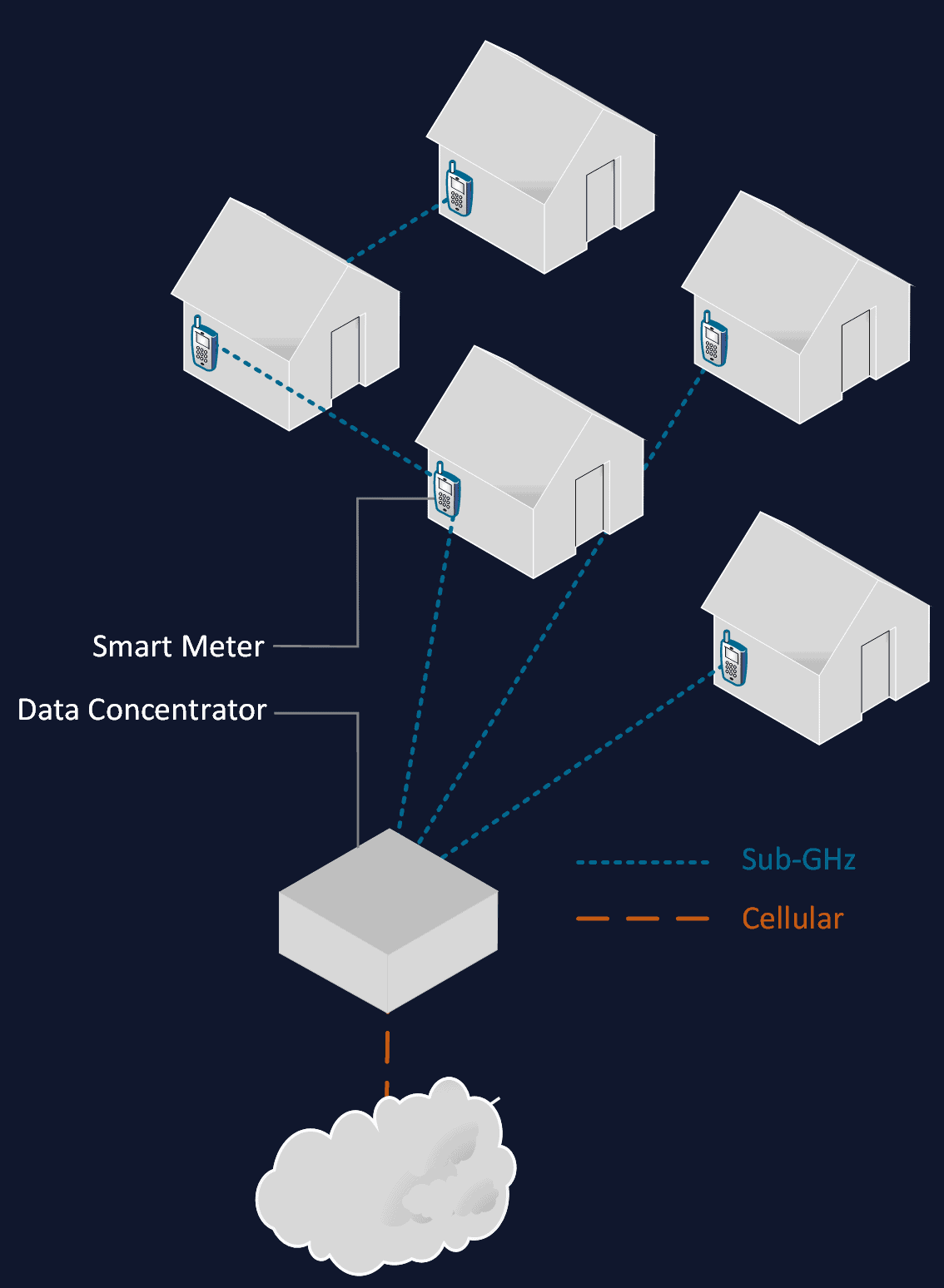Several products utilize a standard operating in the 2.4 GHz band, like Bluetooth, Zigbee or Wi-Fi. These standards and frequency band have their place, but are not the optimal solution for each and every project. A lot of products that use the 2.4 GHz band would definitely benefit from operating at a lower frequency, such as 433, 815 or 915 MHz. Many products have adopted the Sub-GHz band, but there is still a lot of untapped potential in product segments that are stuck at 2.4 GHz, and would benefit from a lower frequency band.
Our experience of developing in the Sub-GHz goes more than 25 years back. An experience that includes discrete hardware design, using commercially available circuits, antenna design, protocol design and RF ASIC design. We have a Mixed-Signal complete Sub-GHz Transceiver IP block, that allows us to efficiently create a custom ASIC with integrated Sub-GHz communication.
Can your product achieve a technological competetive advantage by utilizing the Sub-GHz band? Contact us for a free consultation, and we will help you find out.
ShortLink offers a number of RF Transceiver IPs that have been successfully used in many ASIC projects, and are silicon proven across several process nodes. The latest Transceiver IP has been implemented in TSMC 40 nm low-power (CLN40LP). Sub-block such as transmitter, receiver, PLL, and frontend can be licensed separately, if desired.
Some brief information for our latest IP is available below. Please contact us for more detailed technical information or inquiries.


Sub-GHz frequencies are inherently better suited for many applications where low data rates (>1–10 Mbps) are used. The advantages come directly from physical laws.
Achieve Long Range (> 1 km) communication without relying on cellular technologies
Penetration of walls and ceilings allows reliable indoor communication without relying on tricks such as mesh networks and repeaters
Less attenuation due to atmosphere, foliage and non-reliance on RF reflection results in reliable extreme long range outdoor communication
Lower frequencies result in lower power consumption allowing longer battery life and/or a smaller battery


Sub-GHz allows both indoor and outdoor communication over a large area. One example of an application that greatly benefits from Sub-GHz technology, is smart metering.
How can we help you?
Contact us for a free consultation!
We have more than 25 years of experience in electronics design spanning multiple competence areas. You can rely on us to help you identify and implement the optimal solution to your needs in an efficient and professional manner.




| Cookie | Duration | Description |
|---|---|---|
| cookielawinfo-checkbox-analytics | 11 months | This cookie is set by GDPR Cookie Consent plugin. The cookie is used to store the user consent for the cookies in the category "Analytics". |
| cookielawinfo-checkbox-functional | 11 months | The cookie is set by GDPR cookie consent to record the user consent for the cookies in the category "Functional". |
| cookielawinfo-checkbox-necessary | 11 months | This cookie is set by GDPR Cookie Consent plugin. The cookies is used to store the user consent for the cookies in the category "Necessary". |
| cookielawinfo-checkbox-others | 11 months | This cookie is set by GDPR Cookie Consent plugin. The cookie is used to store the user consent for the cookies in the category "Other. |
| cookielawinfo-checkbox-performance | 11 months | This cookie is set by GDPR Cookie Consent plugin. The cookie is used to store the user consent for the cookies in the category "Performance". |
| viewed_cookie_policy | 11 months | The cookie is set by the GDPR Cookie Consent plugin and is used to store whether or not user has consented to the use of cookies. It does not store any personal data. |